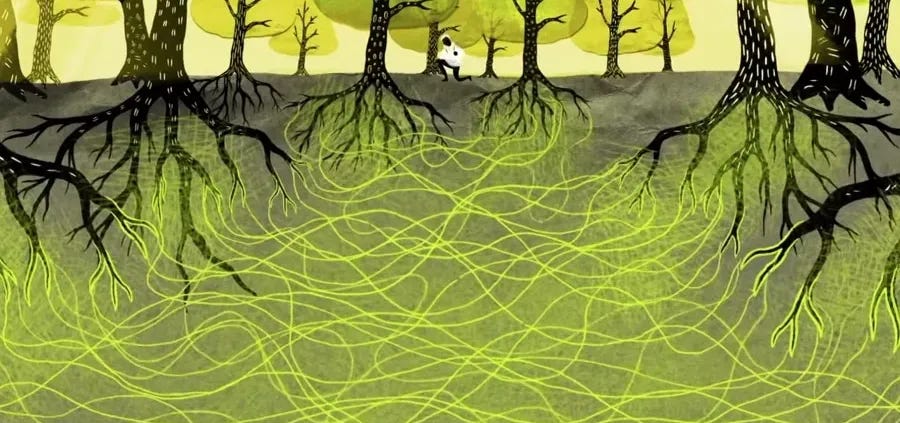I hate the phrase, “your network is your net worth.”
Even though it’s true.
It makes me think of bankers making deals on the golf course and giving internships to their nephews.
Gross.
Yet, I believe that good relationships are central to funding movements and creating real and lasting change.
So, how do I differentiate networking from what I’m calling a “network approach”?
The basics: Network Approach
Networking = extractive, old school, “who do you know,” think wine and cheese and swapping business cards
Network approach = Building infrastructure for an intentional community of supporters who align with your mission and values
With the world in deepening polycrisis, we are all craving belonging, purpose and meaningful impact. Our organisations are not responding to the pressing need to build real relationships based on trust. In his book, Citizens, Jon Alexander points out that the “businessification” of the social impact world, means that we are all now viewed as consumers.
In the current system, we are all in competition for donors, partners, volunteers, mentors, community members, seeking their scarce resources and attention.
Applying the Network Approach
It’s not about gathering a little black book of powerful people who might help the organisation if it benefits them. It’s about cultivating and nurturing an ecosystem of engaged, motivated people who are aligned with the organisation’s mission.
So a community….👀
When I tell people that everything is community building, I either get a blank stare or a resounding YES!!
But bear with, because if it doesn’t make sense yet, I think it will.
The network approach recognises that every supporter—staff, volunteers, donors, partners, and beneficiaries—has a unique set of experiences and skill set to offer. By creating participatory infrastructure with a true community of supporters, organisations can build collective power (to change the world!!!) 🌍.
Thank god because the fate of the planet depends on it.
The Benefits of a Network Approach
Empowers Supporters as Co-Creators
Traditional approaches to engagement often involves a passive relationship (think newsletters). In contrast, the network approach invites everyone into the process of shaping strategies and making decisions (ps this doesn’t need to be every decision)Builds Resilience
When an organisation’s mission is supported by a network of people who are actively engaged and equipped to take action, it’s far more adaptable in times of crisis.Breaks Down Barriers for Impact
In today’s interconnected world, organisations can’t create lasting change by working in isolation. The network approach promotes transparency, agency, and open access to information.Saves Money and Resources
A network approach means less money wasted on costly galas, panel talks, magazines, that are not designed to foster deeper relationships. It means less time wasted initiatives that miss the big picture.
Conclusion: Building for the Long Term
By moving from a hierarchical, organisation-centric model to one that’s inclusive and participatory, nonprofits and social impact organisations can create resilient ecosystems where supporters are more than just names on a list—they’re part of the mission.
This approach is a continuation of scholarship and activism by incredible women like adrienne maree brown and Grace Lee Boggs, who put words to my practices and continue to inspire me. As well as writing by Jon Alexander, Baratunde Thurston, Audrey Tan and Hilary Cottam. In other words, I am building on and weaving strands from an existing movement rather than “inventing” something.
If this is something that you would like to hear more from my organisation BUILD Networks for Good, please sign up for email updates here:
If you want more of this like this, I post on substack every 1-4 weeks 🤪 the next post will (probably) be all about implementing a network approach, to create a culture of collaboration, make sure to follow along here as well!




Love this breakdown. I’m almost 5 years into running my consultancy and without doubt building a network of relationships (and connecting other people) has been vital but also one of the most joyful parts of my work